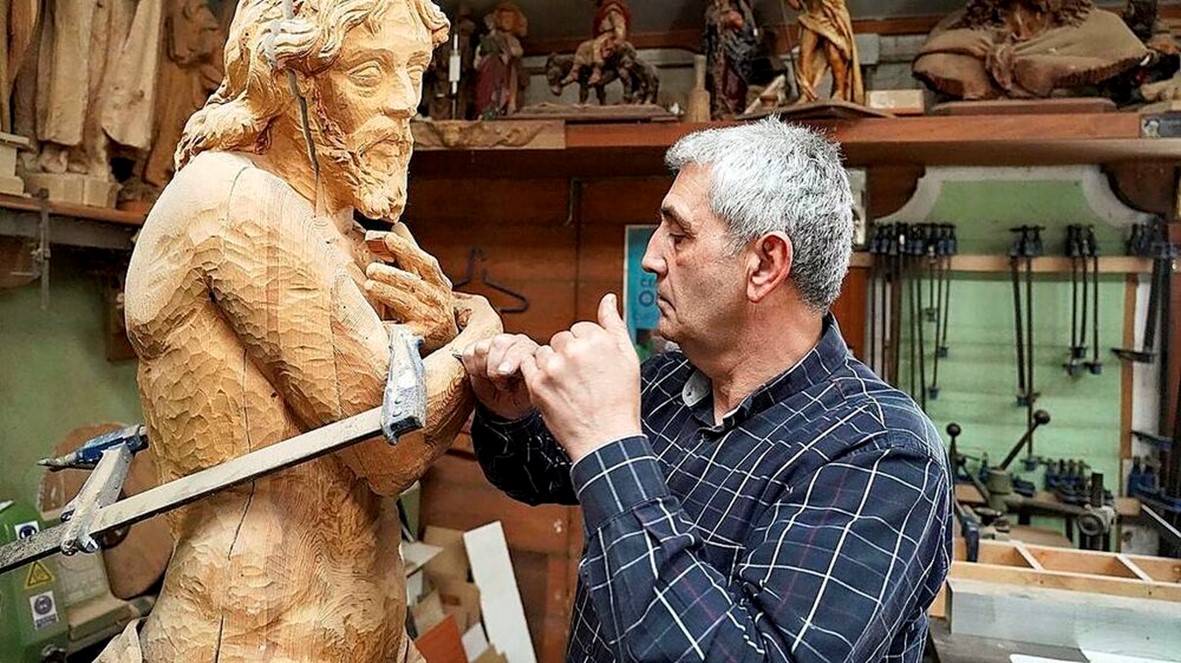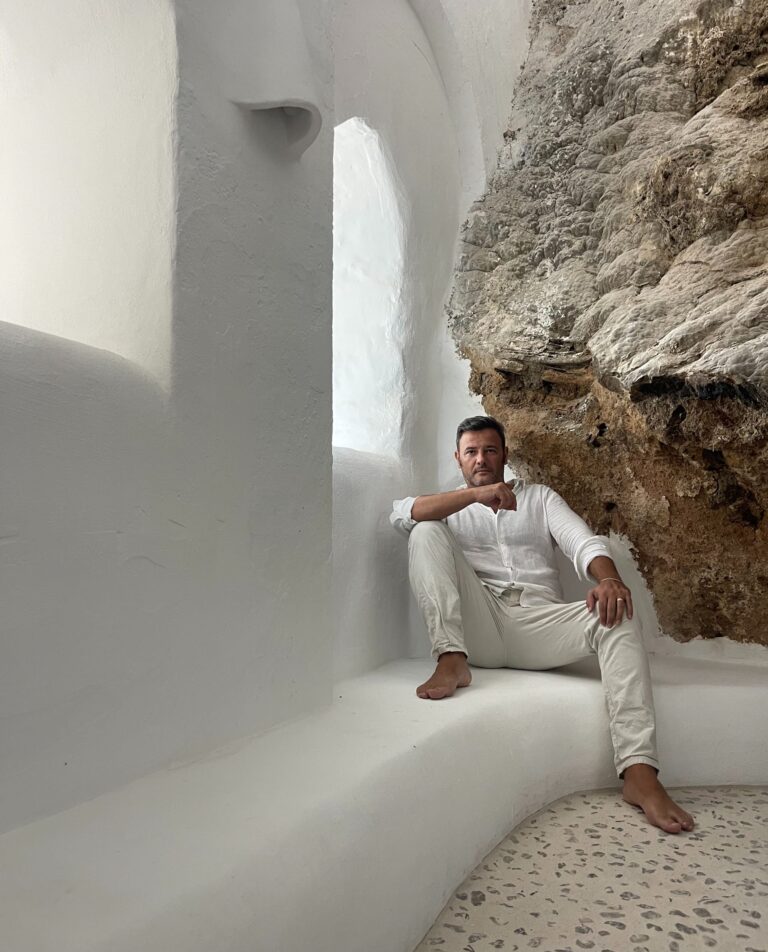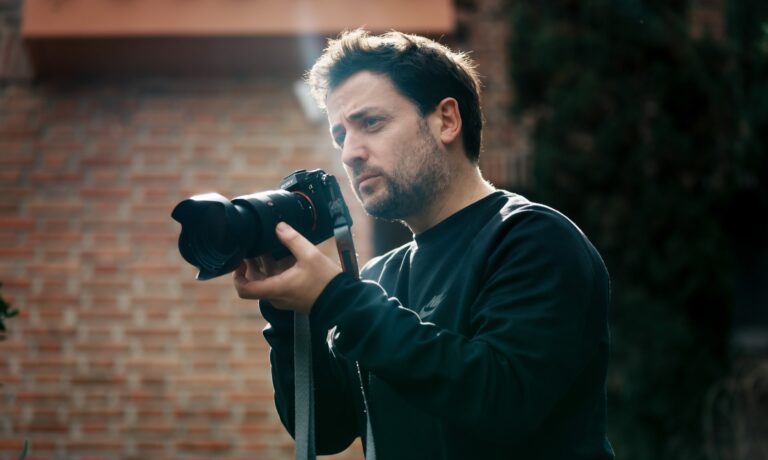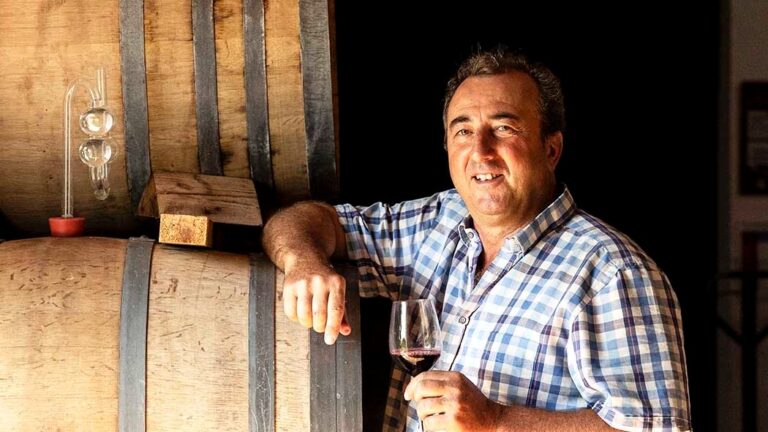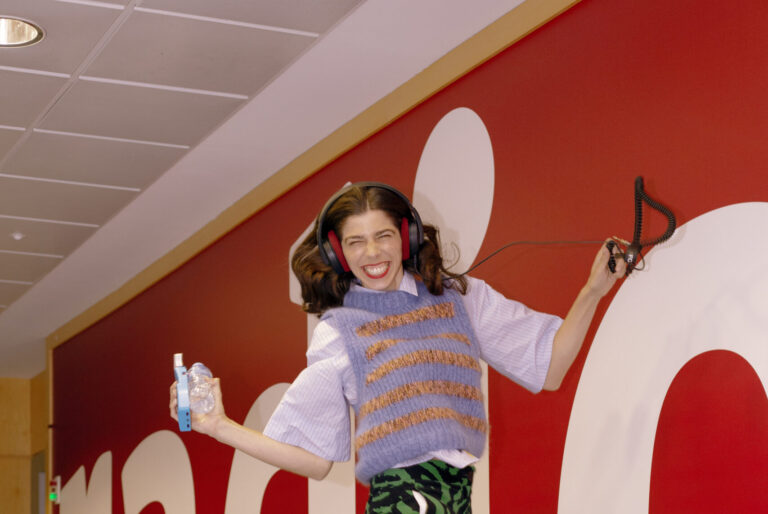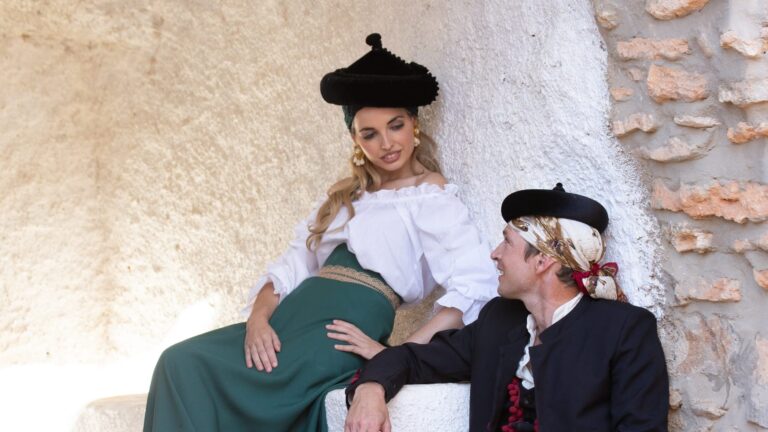Aquí Se Hacen Santos
A orillas del río Cega y en plena Tierra de Pinares vallisoletana tiene su taller este creador. Allí acumula ideas, modelos, obra y experiencia, y de allí salen diferentes piezas talladas de su mano para cofradías, parroquias e iglesias de Castilla y León.
Antaño fueron Berruguete, Juni o Fernández, Solanes o Rincón. Pero desde hace treinta años es él uno de los principales encargados de revitalizar el oficio de la imaginería castellana. El objetivo es el mismo que hace cuatro siglos: mover sentimientos, tocar almas y dar forma a las imágenes de la fe. Las herramientas y las técnicas, las mismas también. La pasión y la atención al detalle, intactas, como el primer día.
Hoy, Miguel Ángel Tapia, maestro imaginero, escultor, carpintero, modelista, dorador y pintor, nos cuenta un poco más acerca de su mundo:

Hola Miguel Ángel, ¿cuándo supiste que te querías dedicar al arte de la talla?
El más antiguo de los recuerdos que tengo sobre la madera, es con siete u ocho años cuando veía cortar, talar y “picar la leña”. Ver el hacha entrar en la madera me llamaba mucho la atención hasta el punto de meterme en una plantación de chopos y ponerme a talar árboles por el gusto de ver saltar las astillas. Luego en la escuela de arte de Valladolid descubrí la delicadeza y las calidades que se pueden sacar de este cálido material.
Do you have a favorite type?
La figura humana es espectacular para las disciplinas escultóricas. Todo lo que se puede desarrollar, interpretar, crear y transmitir mediante la anatomía humana esculpida no se puede representar en otros modos de arte.
Dentro de la imaginería, los yacentes, crucificados, San Sebastianes o San Jerónimos, son los que más disfrutamos los escultores, y los que más se han utilizado para generar devoción, sentimiento o atracción.
¿Con qué maestro te irías de vinos por Valladolid para hablar de su trabajo?
Con Berruguete, que era dueño de una bodega y conocía Florencia, algo me contaría de su experiencia por Italia. Con Juni me iría a su taller tan solo a verlo trabajar, y sería increíble poder comentar experiencias comunes con Gregorio Fernández.
También con dos imagineros que admiro, Esteban de Rueda y Sebastián Ducete, que trabajaron en Toro y Zamora, y estos también tenían que entender de vino…
What is your favorite corner of the province of Valladolid?
Poco a poco estoy descubriendo los pueblos de la provincia, de los que me siguen sorprendiendo sus ricas iglesias de los s. XV y XVI.
Además, me llama la atención cualquier sitio por el que corra un río o canal. El Canal de Castilla es un lugar que me encanta.
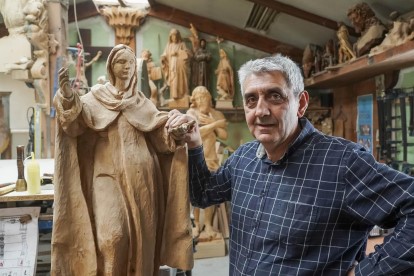
Artificial Intelligence applied to manual artisan work: useful tool or dehumanization of the craft? Do you have any opinion?
The moments in which devices such as the potter's wheel, the wooden wheel, the loom, the camera obscura, the stitching machine, and more modern inventions such as sewing, copying, or reproduction machines, both in 2D and 3D, appeared were important milestones and impulses for both crafts and art.
AI is a new tool available to anyone who wants to use it for productivity, creation, or design purposes. What intelligent tools are not going to achieve is the human aspect and character that the artist and the craftsman give to their pieces, imbuing them with that own style that each creator possesses.
Where are you most comfortable working: civil sculpture, liturgical carving, processional pieces...?
Cada proyecto es una nueva experiencia, un reto y aprendizaje, a lo que se puede sumar la historia que arrastra la figura o personaje a esculpir. Esto hace que disfrute desde el comienzo de la obra tratando de trasmitir lo que significa.
Do you receive orders from abroad? Where is your furthest piece?
Although there is a lot of interest in my work in Latin America, most of my pieces are spread throughout Galicia, Asturias, La Rioja, Castilla y León, Cuenca, or Madrid.

You have been teaching for many years in different institutions. What is the most rewarding thing for you about teaching your subjects?
Well, perhaps the fact of seeing that the students follow you, course after course, in the training of carvings, cabinetmaking, and polychrome, and they do so with great enthusiasm to learn more about the trade.
Do you have any hobbies outside the workshop?
A pretty tough one: my veggie garden.
¿Cómo ves a la artesanía española en los próximos años?
Con las nuevas tecnologías y los conocimientos de los actuales artesanos estamos viviendo la mejor época para poder asegurar el futuro de la artesanía, la creación y los oficios. Que los creadores puedan formarse y ejercer su labor con menos esfuerzo que antes.
La anterior invitada, María José Rubio – Historiadora y escritora, nos dejó esta pregunta: ¿Qué valores crees que transmites con tu dedicación profesional?
Well, values are provided such as the training or dissemination of techniques, disciplines, trades, and artistic style with their own identity, something so representative of Castilla y León, and of the "School of Castilian imagery". Furthermore, within what the meaning of "imagery" entails, an attempt is made to convey a sentimental and devotional value, which each person will feel differently. Having been able to contribute or transmit my knowledge and my creations to different regions has been and will always be a great satisfaction for me.
Can you leave us a question for the next protagonist?
Sí. ¿Cuáles han sido las causas que te han llevado a tomar la decisión de dedicarte a tu profesión?

